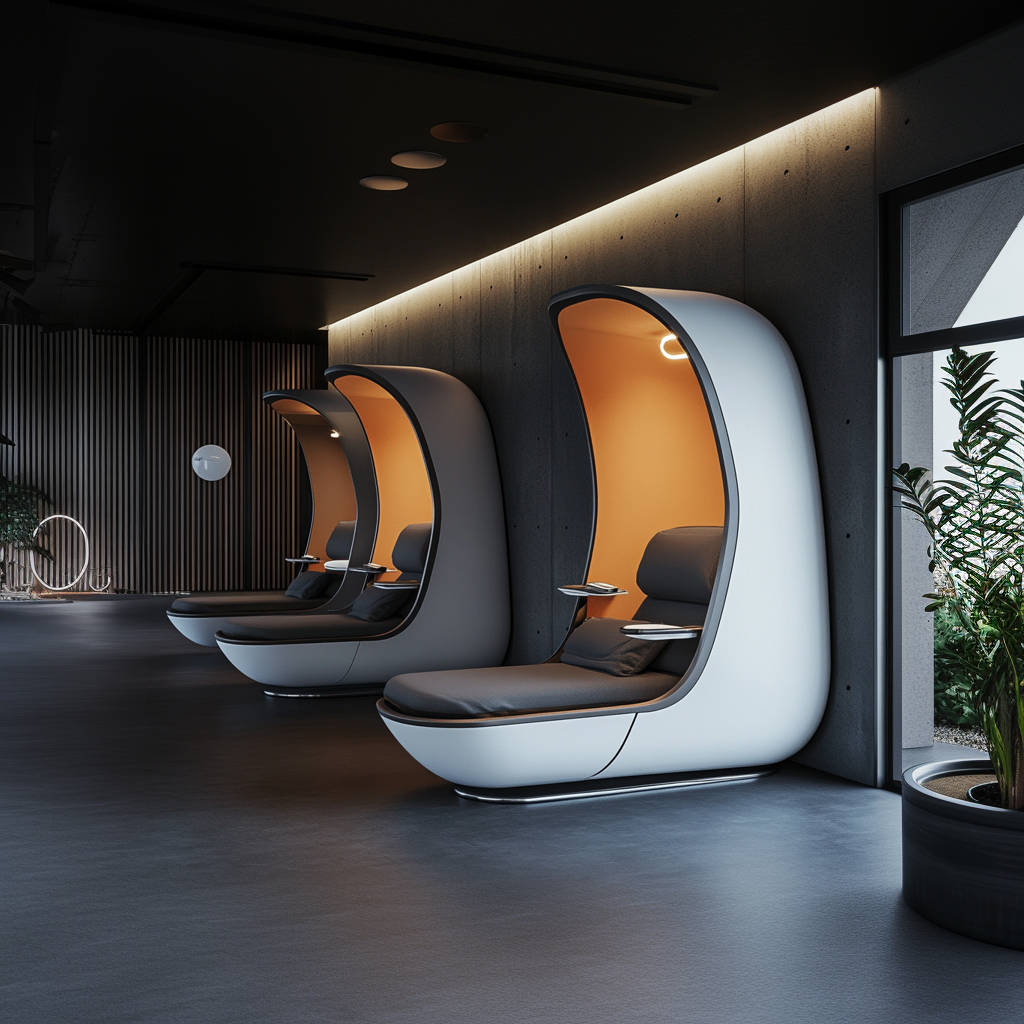Dispelling the Myth of Napping
Imagine yourself at your desk with drooping eyelids and no relief from your third cup of coffee. Does that sound familiar? A revolutionary alternative to the conventional wisdom of powering through exhaustion has been adopted by forward-thinking companies such as Google and Huffington Post: nap rooms.
Nap rooms are turning out to be productivity gold mines rather than a haven for lazy people. These peaceful areas, supported by science, address the basic fact that rested workers are more alert, content, and productive. In this blog, we’ll examine how adding nap rooms to the office isn’t just a strange amenity; it’s a revolutionary idea for both workers and businesses.
The Argument in Favour of Office Sleep
First, let’s talk about the science. Even a quick 20-minute nap can significantly increase alertness and performance, according to numerous studies. For example, a NASA study found that astronauts and pilots who took power naps were 54% more alert and 34% more productive. These are not merely small improvements; rather, they are substantial advancements that have the potential to improve productivity in any workplace.
However, mental acuity is not the only factor. By raising serotonin (the happiness hormone) and decreasing cortisol (the stress hormone), napping also promotes emotional well-being. This powerful blend lessens anxiety and enables workers to return to their desks with a more composed and focused attitude.
Napping at work has historically been stigmatised as being unprofessional or lazy, despite the benefits that have been demonstrated. This view is quickly shifting, though. A growing body of research emphasises the value of naps, and influential companies are normalising them. A once-taboo subject is now a pillar of forward-thinking workplace culture.
The Advantages of Nap Rooms
The most immediate and visible benefit of a nap room is combating fatigue. Instead of resorting to caffeine or sugary snacks, employees can recharge naturally. Napping promotes better blood circulation, eases muscle tension, and even alleviates headaches—making it easier to return to work feeling refreshed.
Beyond the short-term perks, regular power naps can contribute to long-term health. Studies show that getting enough sleep boosts immunity, which results in fewer sick days and a healthier team as a whole.
Nap rooms provide a counterbalance to the workplace epidemic of stress. Short rest periods can significantly reduce stress and give workers a much-needed mental reset. The outcome? Calmer, happier workers who are more capable of managing the day’s obstacles.
Reduced stress also has a positive knock-on effect on team dynamics. People interact less tensely when they feel more balanced, which creates a more peaceful and encouraging atmosphere.
Taking a nap helps you think more clearly, not just feel better. Napping improves memory retention and problem-solving skills, according to research. A well-timed nap can be the secret weapon for optimal performance, whether you’re crunching data or getting ready for a big presentation. Well-rested minds tend to be more creative and quick-thinking, which gives businesses a competitive advantage.
Useful Advice for Setting Up Nap Rooms
It takes more than just throwing a beanbag chair into an empty office to create a nap room. Careful planning is necessary to create a nap area that maximises comfort and relaxation. Begin with comfortable, ergonomic furnishings such as nap pods or recliners. Lighting that can be adjusted is crucial because soft, low lighting fosters a peaceful environment without interfering with sleep cycles.
Soundproofing is yet another essential component. Employees can sleep soundly in a peaceful setting. Think about including components like noise-cancelling panels or white noise machines. The experience can be further enhanced by optional additions like aromatherapy diffusers that emit relaxing aromas like eucalyptus or lavender.
Provide explicit rules to guarantee that nap rooms continue to be useful areas rather than private retreats. Limit nap lengths, for instance; 20 to 30 minutes is the best amount of time for a power nap without feeling groggy. Sign-up sheets and app-based booking systems are examples of scheduling tools that can be used to control access and avoid conflicts.
It’s equally critical to cultivate a nap-friendly workplace culture. Explain that napping is a calculated strategy to improve wellbeing and productivity, not a sign of laziness. In order to dispel any remaining stigma, encourage leadership to set an example of this behaviour.
Restful Minds, Successful Workplaces
It’s time to reconsider our strategy for increasing workplace productivity. Once thought to be a luxury, nap rooms have been shown to be an effective way to boost worker productivity and well-being. The advantages of napping extend well beyond a brief period of rest, including cognitive enhancement, emotional equilibrium, and physical recuperation. They have a knock-on effect that leads to more contented workers, more cohesive teams, and improved business results.
Purchasing a nap room is an investment in the success of your team. Businesses can foster an environment where people and ideas flourish by embracing rest as an essential component of the workday. Let’s embrace the future, where taking naps is a strategy rather than a luxury, and let’s put an end to the stigma associated with “sleeping on the job.”





